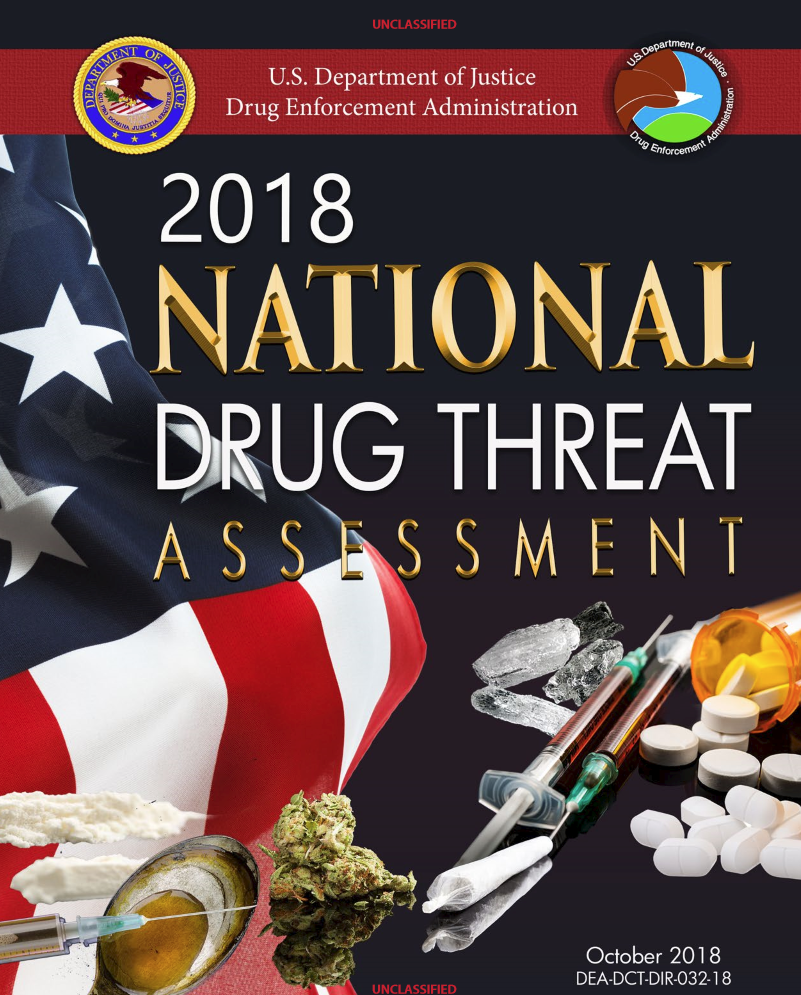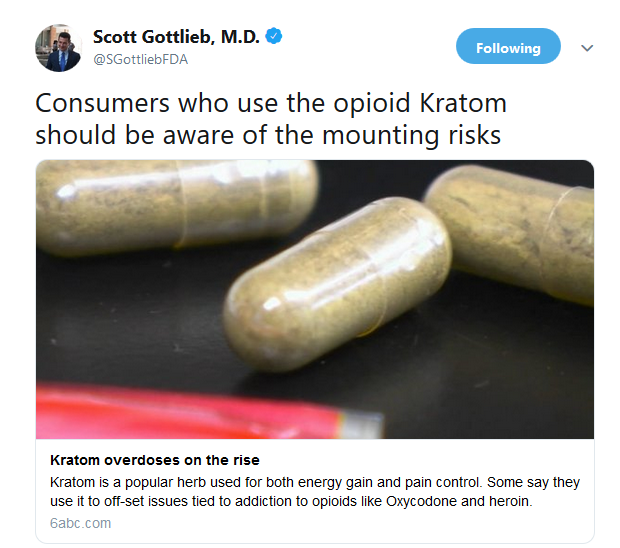By Pat Anson, PNN Editor
The Drug Enforcement Administration has released the 2018 National Drug Threat Assessment, the agency’s annual report on drug trafficking and drug abuse in the United States.
Over 150 pages long, the annual report paints a grim picture of a nation overwhelmed by a tsunami of illicit fentanyl, heroin, prescription opioids, meth, marijuana, cocaine and other drugs that the DEA says are having “a devastating effect on our country.”
Conspicuously absent from the report is kratom, the herbal supplement that the FDA blames for dozens of fatal overdoses and the DEA once tried to list as a dangerous controlled substance — the same substance that Ohio health officials call a “psychoactive plant” that produces a “heroin-like high.” Ohio will soon join five other states in banning the sale and possession of kratom.
But there’s not a word about kratom in the National Drug Threat Assessment. There never has been.

“It is not surprising. Kratom is not the ‘dangerous opioid’ that the FDA has made it out to be,” says Jane Babin, PhD, a molecular biologist and consultant to the American Kratom Association, an organization of kratom vendors and consumers. “It does not kill throngs of people like heroin and synthetic opioids. Everything we know about kratom is that people use it to avoid much more dangerous prescription and illicit opioids.”
Kratom comes from the leaves of a tree that grows in southeast Asia, where it has been used for centuries as a natural pain reliever and stimulant. In recent years, millions of Americans have discovered kratom and use it to self-treat their chronic pain, addiction, anxiety and depression.

As kratom has become more popular, the public health campaign against it has intensified. A small salmonella outbreak earlier this year in kratom products led to several recalls and stark warnings that “anyone consuming kratom may be placing themselves at a significant risk.”
Nearly 200 people were sickened in the outbreak, but no one died and the CDC never identified the source of the salmonella.
FDA commission Scott Gottlieb, MD, has taken to calling kratom an “opioid” (its active ingredients are alkaloids) and regularly tweets that consumers “should be aware of the mounting risks” of using the herb.
Yet there’s been no mention of kratom in the DEA’s annual assessment of drug risks in the United States.
““Every year that goes by in which alleged ‘kratom-associated deaths’ don’t even merit a mention by DEA in this report further drives home the relative safety of kratom,” says Babin. “The only thing peculiar is that FDA refuses to acknowledge these facts.”







